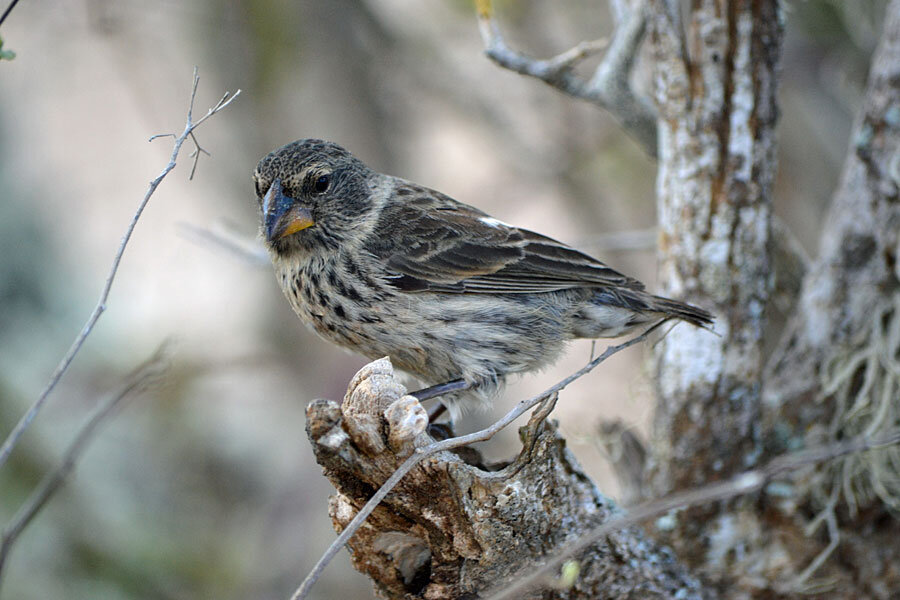How scientists may save Darwin's Galápagos finches from extinction
Small birds played an important role in Charles Darwin's theory of evolution by natural selection. Darwin's study of finches he had collected in the Galápagos Islands helped him identify speciation, or how new biological species appear.
Today, Darwin's finches are in danger. A parasitic fly that appeared on the islands just a couple decades ago could drive the finch populations to extinction, say researchers.
But "it's not all gloom and doom," University of Utah parasitologist Dale Clayton tells The Christian Science Monitor in an interview. A reduction of nests infested by the fly by just 40 percent should alleviate the risk of extinction, he says.
Dr. Clayton and colleagues studied the fly's effect on the medium ground finch, Geospiza fortis, one of the most common of at least 14 species making up Darwin's finches. The scientists then entered five years of data into a mathematical model to calculate the birds' extinction risk. Their findings are reported in a paper published online Friday in the Journal of Applied Ecology.
The parasitic nest fly, Philornis downsi, lays eggs in the finches' nests. When the larvae hatch, they feed on the baby birds.
Newborn medium ground finches are too tiny, at about the size of a peanut M&M, to survive the fly larvae, say researchers. Those in infested nests usually die within a week of hatching.
"I'm surprised by the virulence of this parasite, just how truly nasty it is," Clayton says. But, he adds, "There are several groups of researchers working on different possible management methods."
One possible solution is to introduce another nasty critter to the islands: a parasitoid wasp. Parasitoids are like parasites, but more severe. They often kill or consume their host.
"It's a risky approach," Clayton admits. "You need a wasp that's host-specific. You don't want parasitoids running around killing lots of different species of insects in the Galápagos." But, he says, parasitoids are usually very host-specific, right down to the species.
Another possible solution Clayton describes as "self-fumigation."
Birds often find the softest material to line their nests. In his research, Clayton found that the birds would use cotton balls left nearby by the scientists, who had sprayed the soft fluffy material with a safe insecticide.
The finches that lined their nests with at least a gram of fumigated cotton, about the amount that would fit in a large thimble, would be protected from the parasitic flies, which would die when exposed to the insecticide.
Scientists have also introduced sterile males to other problematic parasitic populations. The females that reproduce with these infertile males couldn't produce viable offspring, thereby reducing the population.
All these techniques are time consuming and labor intensive, but, Clayton says, all it could take is reducing the infestation by 40 percent to save the finches. He does warn that, as these numbers come from mathematical models, they may be imprecise. But it does show that there is hope.
Clayton estimates that the parasitic nest fly arrived in the Galápagos about 25 years ago, probably hitching a ride in the cargo hold of a ship.
Studying the finches could teach scientists more than just how to save this bird. "We also can learn a lot about host-parasite coevolution," Clayton says. "We're interested in how quickly the birds may be able to evolve defenses, ecological, behavioral or other defenses, against the parasite."






